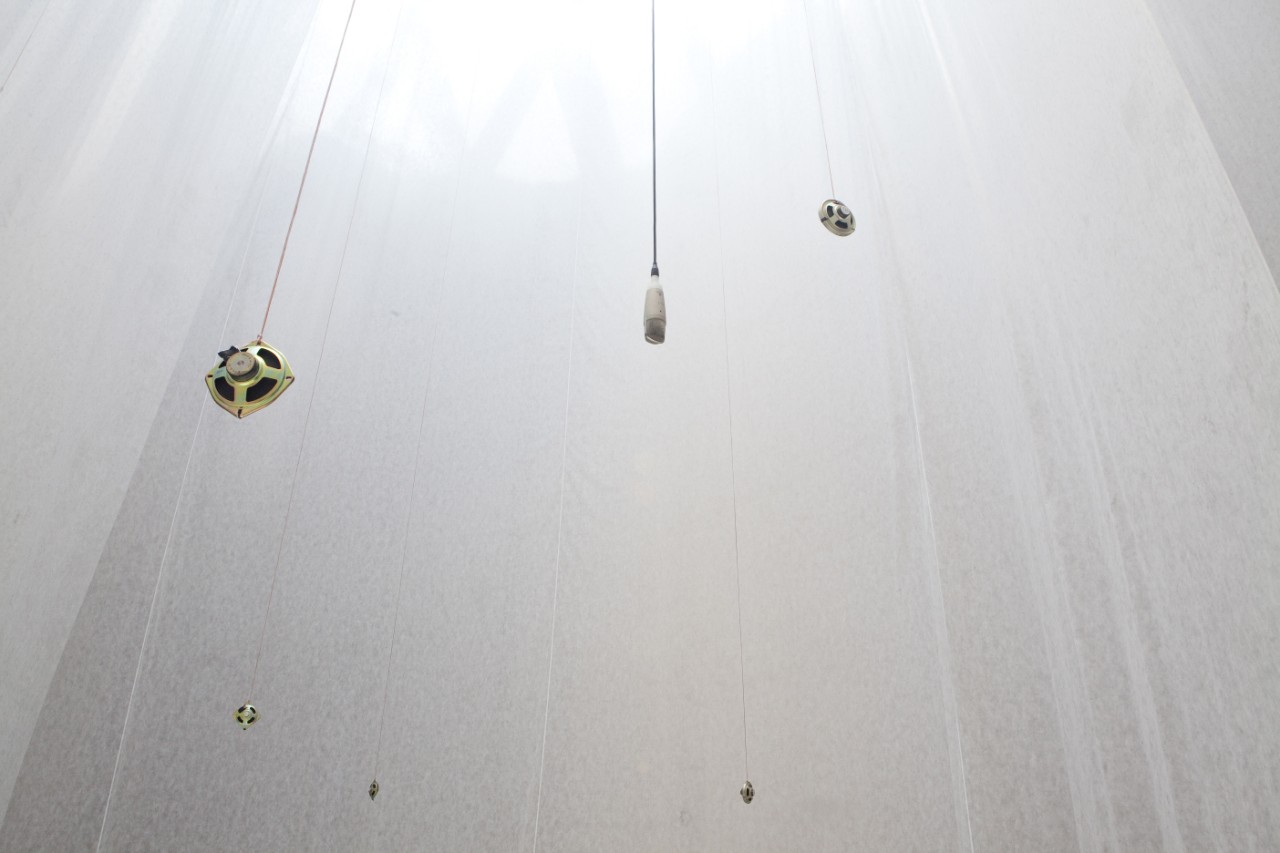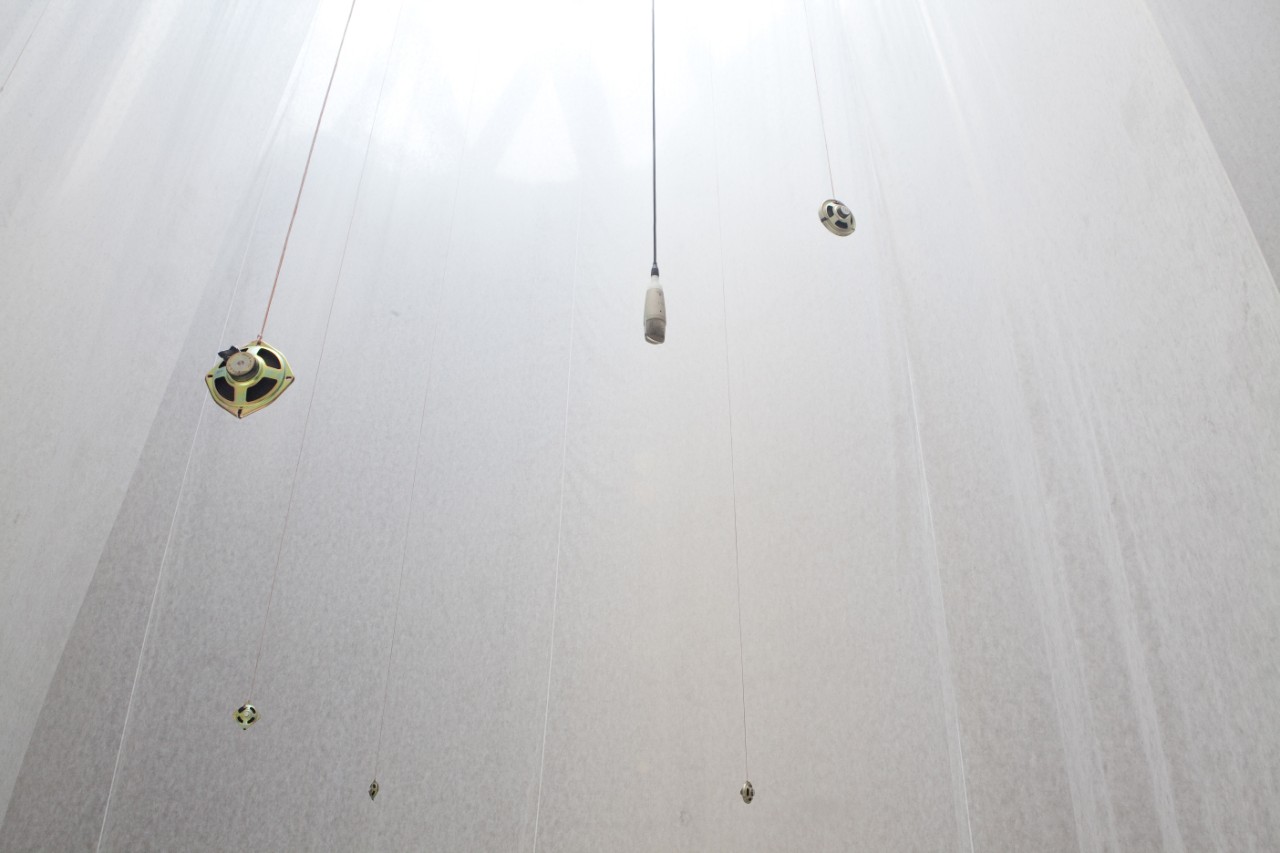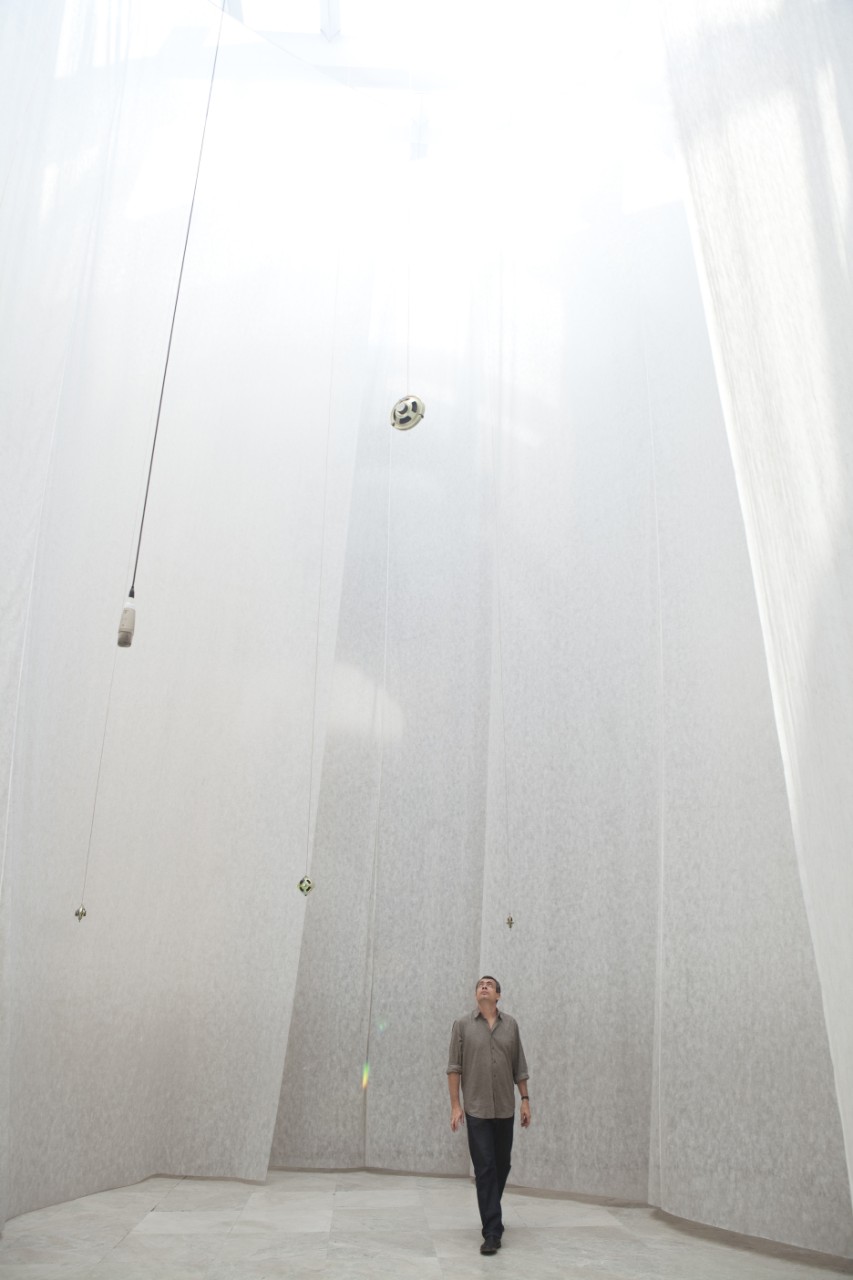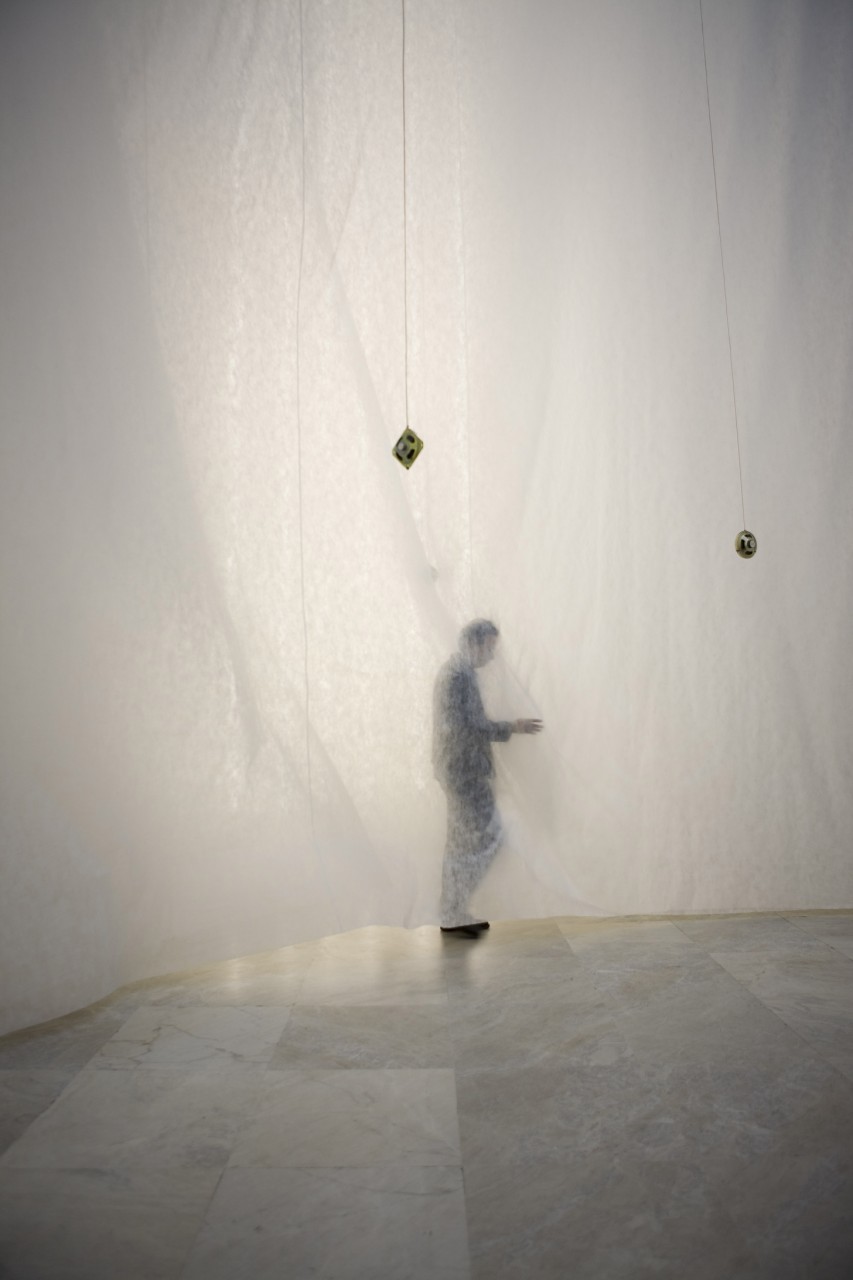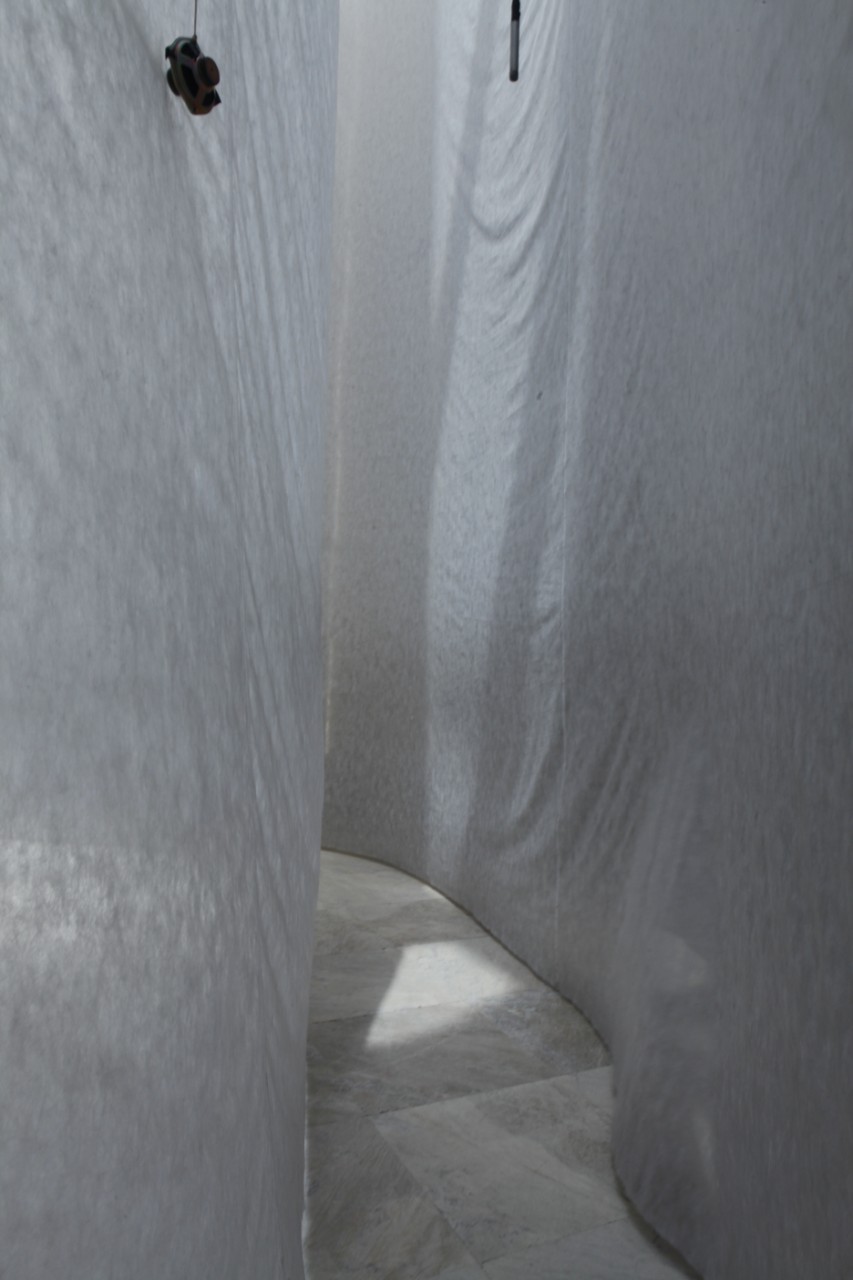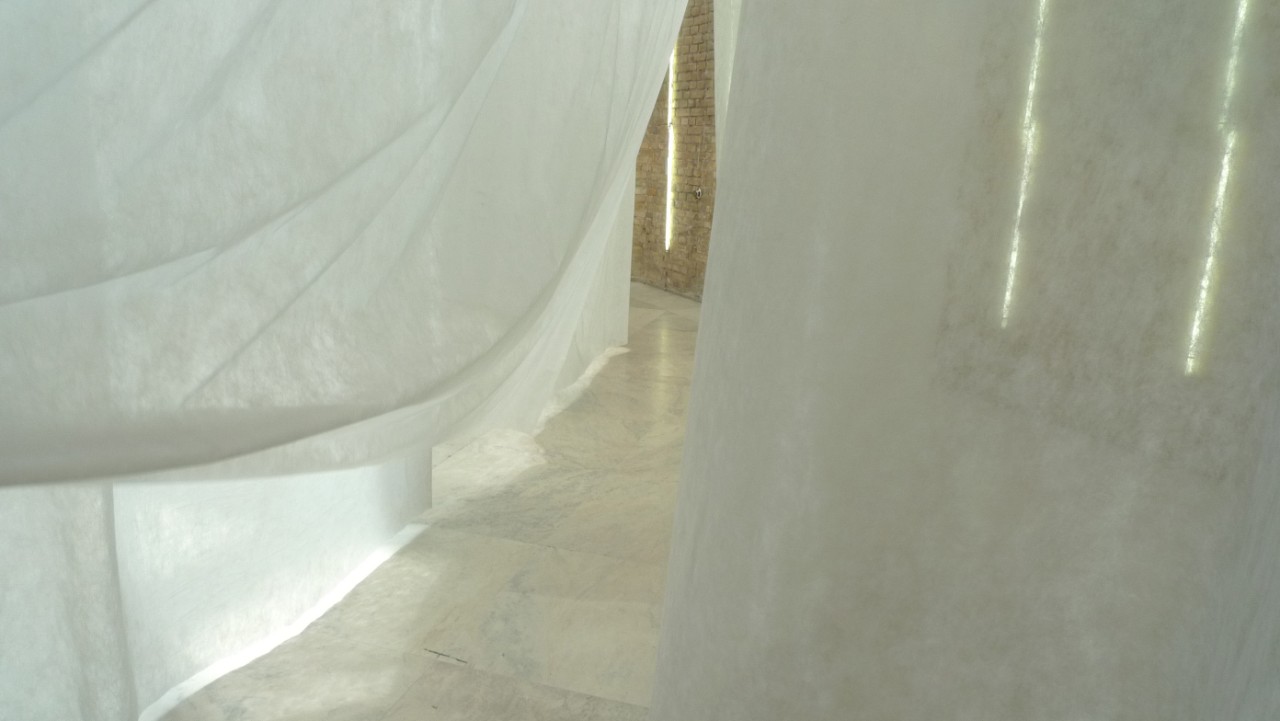The Museum of Modern Art presents Carlito Carvalhosa: Sum of Days, a large-scale environmental and participatory sound installation that will be on view in MoMA’s Donald B. and Catherine C. Marron Atrium, from August 24 to November 14, 2011. Constructed from soft, white, translucent material that hangs 60 feet from the ceiling to the floor, this monumental, voluminous installation takes the shape of an elliptical labyrinth through which Museum visitors are invited to walk. Sum of Days marks the North American museum exhibition debut of Carlito Carvalhosa, one of Brazil’s most celebrated contemporary artists. The exhibition is organized by Luis Pérez-Oramas, The Estrellita Brodsky Curator of Latin American Art, and Geaninne Gutiérrez-Guimarães, Curatorial Assistant, Department of Drawings, The Museum of Modern Art.
The structure of Sum of Days interrupts the defined limits of the surrounding architectural space, allowing an experience of total immersion while suspending the usual parameters of spatial reference known to visitors. The labyrinth of fabric incorporates a system of microphones that hang from various heights and record the day’s ambient noise, which is played back the following day through several speakers. Each day a new recording will gradually superimpose the one from the previous day, thus creating a unique sound installation each day of the exhibition.
Adding yet another element of sound will be musical performances chosen and performed by American composer Philip Glass and by members of his musical ensemble. The performers will present original compositions by Glass or by other ensemble members, and play from within the installation for approximately 60 to 90 minutes during public hours between September 8 and November 10. The performances will occur on a weekly basis, with specific performance times to be announced via MoMA’s Twitter account (@MuseumModernArt) on the day of the performance. Together, the accumulation of daily ambient sound and musical performances will constitute an immaterial layering of time—an auditory memory of the accidental noise inherent to everyday experience.
